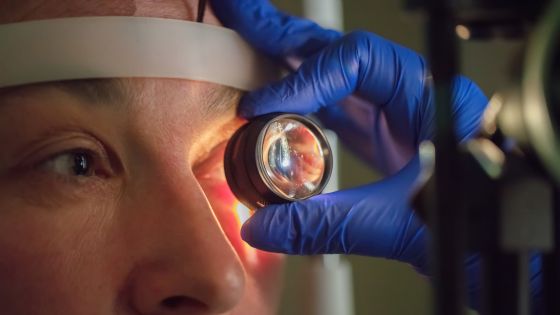Are you or your loved ones experiencing blurred or hazy vision? If so, cataract eye surgery could be the solution to restore clear vision. With time, it’s not unusual for the usually transparent lens in our eyes to gradually develop opaque areas called cataracts. While they may initially produce bothersome symptoms, unaddressed cataracts can lead to significant visual impairments.


This blog post will delve into seven essential aspects of cataract surgery, encompassing its definition, mechanism, and how it effectively alleviates cloudy vision issues. Let’s get started.
Restore a Clear Vision with Cataract Surgery: 7 Things to Know
1. What is Cataract Surgery?
Cataract surgery is a medical intervention specifically intended to remove or extract a clouded lens within the eye, a condition responsible for reduced or distorted vision, and replace it with an artificial lens implant.
The eye’s natural lens undergoes a breakdown of proteins as we grow older, leading to the development of a condition known as cataracts, characterized by haziness, cloudiness, or opacity. While aging is the primary cause, cataracts can also result from eye injuries, diseases, trauma, extended exposure to UV light, specific medications, or genetic predisposition. Cataracts can significantly impact daily activities, including reading, driving, and engaging in recreational pursuits.
The surgical procedure is remarkably swift, typically taking only 15-20 minutes, and is typically conducted on an outpatient basis, boasting a remarkable success rate with minimal complications. Cataract surgery frequently results in a substantial improvement in vision for most patients.
Also read: Why are Progressive Lenses Blurry on the Sides?
2. What are the Symptoms of Cataracts?
Common symptoms of cataracts include:
- Blurred/foggy vision
- Altered or discolored perception of colors
- Dual imagery within a solitary eye
- Discomfort from light sources such as lamps, sunlight, or car headlights
- Heightened sensitivity to light
- Deteriorated night vision
In certain cases, cataracts can be inherent, known as congenital cataracts. These eye anomalies can manifest either before or during fetal development. Timely surgery performed within the initial six weeks of life typically leads to favorable visual outcomes for infants with this condition.
3. What are the Common Types of Cataract Surgery?
Here are the five most common types of cataract surgery:
1. Intracapsular Cataract Surgery
Intracapsular cataract surgery involves the removal of the entire lens and its surrounding capsule through a larger incision. However, this method is rarely used in modern practice due to its higher risk of complications compared to more advanced techniques.
2. Phacoemulsification
Phacoemulsification is a precise method that employs an ultrasonic probe inserted through a small incision of 2-3mm. Vibrations are used to dislodge the cataract, and suction is employed to extract the fragments, making way for the insertion of a foldable lens. This technique results in a small incision that typically heals naturally, eliminating the need for sutures.
3. Femtosecond Laser-Assisted Cataract Surgery (FLACS)
FLACS utilizes a laser to create incisions and soften the cataract, replacing manual techniques. This reduces the energy needed for phacoemulsification and speeds up the healing process. The laser can also create precise incisions to correct astigmatism by reshaping the cornea, reducing the dependence on post-operative glasses. Although its widespread availability at an affordable cost varies, FLACS remains a popular choice worldwide.
4. Manual Extracapsular Cataract Surgery (MECS)
MECS involves the use of a larger incision, typically measuring 9 to 13 millimeters, for lens removal and intraocular lens (IOL) insertion. The larger incision size in MECS does increase associated risks compared to phacoemulsification. Nevertheless, MECS is a widely chosen procedure globally due to its cost-effectiveness.
5. Manual Small Incision Cataract Surgery (MSICS)
Microincision cataract surgery (MSICS) employs a “V”-shaped incision with a narrower external width of 6.5-7 mm that expands internally to a maximum of 11 mm for lens removal. Research indicates that while phacoemulsification may yield superior short-term results in the first three months after surgery, both MSICS and phacoemulsification produce similar long-term outcomes with comparable risks. A notable advantage of MSICS is its cost-effectiveness when compared to phacoemulsification.
4. Benefits of Cataract Surgery
Surgical intervention proves to be a highly effective remedy for individuals grappling with deteriorating eyesight caused by cataract development. No pharmaceutical therapies have shown the capacity to improve vision affected by cataracts.
After undergoing cataract surgery, the majority of patients experience an improvement in their visual acuity. This newfound clarity allows individuals to effortlessly discern vibrant details once again. Additionally, their reduced susceptibility to glare significantly bolsters night time driving safety, while their ability to perceive colors more vividly is also restored. Furthermore, in many instances, post-surgery, the need for glasses diminishes or disappears entirely.
5. How to Prepare for Cataract Surgery?
To ensure a seamless surgical experience for cataract removal, certain preparations are typically advised in the hours and days leading up to the procedure. Patients are usually instructed to abstain from consuming any food or fluids for approximately 12 hours before the surgery, as this helps reduce the risk during anesthesia.
Your healthcare provider might recommend temporary adjustments to your medications, particularly those like blood thinners, to minimize the possibility of bleeding complications. It’s crucial to openly communicate all your supplements and prescriptions, especially if you have underlying conditions such as prostate concerns, as some treatments can interact with the surgical procedure.
Following a successful surgery, patients are usually allowed to return home on the same day as the procedure. Nevertheless, it’s a prudent measure to arrange transportation in advance, as self-driving immediately after the surgery is not permitted.
During the recovery period, physicians often advise patients to make certain modifications to their activities to avoid putting excessive strain on the eye. This may include refraining from heavy lifting, bending, or engaging in vigorous exercise.
The cost of cataract surgery can vary, typically falling within the range of INR 20,000 to INR 50,000. The specific cost depends on factors such as the hospital, surgeon’s fees, any potential complications, and the type of surgery required.
6. What are the Risks of Cataract Surgery?
- Eye infection
- Eye bleeding, pain and swelling
- Detached retina
- Swelling of the retina
- Damage to other eye parts
- Blurred Vision
- Seeing halos, glare, and shadows
- Vision loss
- IOL dislocation, moving out of position
7. What are the Precautions after Cataract Surgery?
- Rest, and try to limit strenuous activities for short periods as directed by your surgeon.
- Wear sunglasses to protect your eyes from dust, wind, and bright sunlight.
- Your surgeon will provide you with a prescription for eye drops to diminish inflammation and guard against infection.
- Follow the recommended schedule and dosage as directed.
- Limit or stop using computers, smartphones, and other electronic devices during the initial days of recovery.
- For a specified period (usually a few weeks), avoiding swimming and using hot tubs to prevent infection is advisable.
- Contact your surgeon immediately if you experience severe pain, a sudden decrease in vision, increasing redness, or any other concerning symptoms.
Conclusion
The advancements in medical technology have brought us closer to achieving crystal-clear vision through laser cataract surgery. This cutting-edge procedure offers several key advantages, such as precision, safety, and faster recovery. Patients can confidently embark on their journey toward improved vision by understanding the seven essential aspects of laser cataract surgery.

























